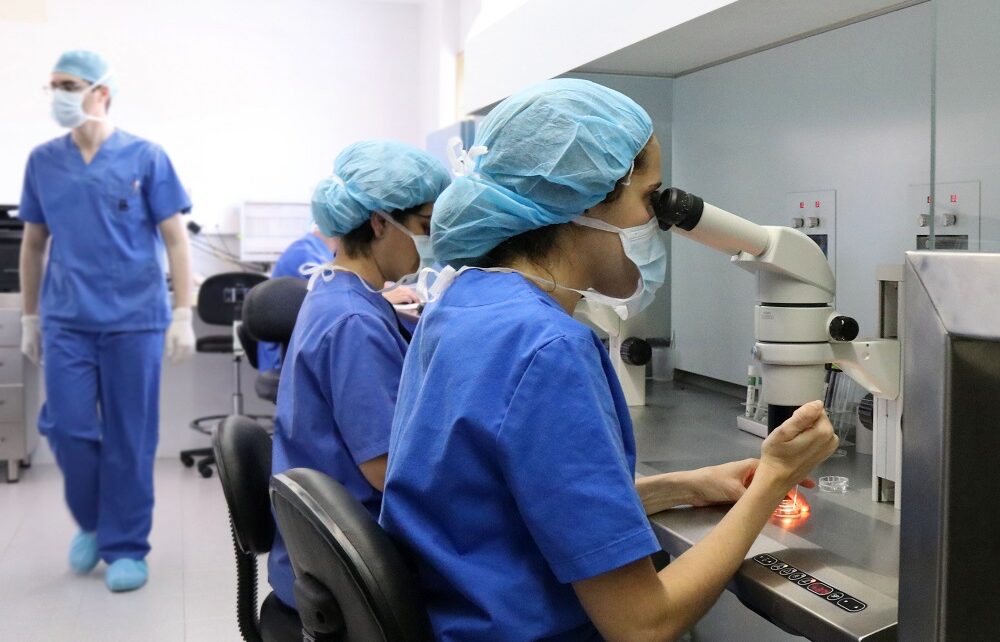
What posible complications can be given in the embryo transfer?
The aim of any assisted reproductive treatment ends with embryo transfer. This is the gentle placement of the embryo in the uterine cavity. Is the key moment of the entire procedure, embryologist and gynaecologist working together.
Embryo transfers can be done in a fresh cycle, that is, transferring the embryo after in vitro development in day 5 or 6. Or in a delayed cycle called cryotransfer, in which the embryos are previously frozen. On both cases, an attempt is made to synchronize in the best possible way the embryo to be transferred with the uterine endometrium that is going to nest it, in a period known as the implantation window.
Therefore, embryo transfer is undoubtedly the most expected moment by patients who undergo fertility treatment and one of the most relevant of those carried out within the IVF in vitro fertilization laboratory.
Few are the complications that can arise during this procedure, as technically it does not entail great difficulty for the specialists who carry it out when they have experience and training.
Índice
Embryo adherence to the embryo transfer catheter
One of the few incidents that may happen, which in any case barely reaches 5% of the transfers done, is that the embryo remains attached to the transfer catheter after removing it from the uterus.
Fortunately, is easy to detect, because the embryologist must always check that has not happened. So, this would detect immediately when checking the catheter under a microscope after transfer.
Despite of this not being the most appropriate situation for the embryo because of the time outside the incubator or the maternal uterus, it doesn’t imply a diminished success rates of the treatment. In fact, most developed embryos, those that are in the initial hatching stage or already hatched that seek to fuse with the endometrium, are the ones that generally tend to adhere to the transfer catheter. Therefore, it should not be a cause for concern that this event occurs during embryo transfer.
Bleeding after the catheter transfer withdrawal
It has been proven and described that the presence of blood at the end of the catheter when it is withdrawn from the uterus is associated with a decrease in pregnancy rates. However, this is very unfrequently.
Difficulties in inserting the catheter transfer into the uterine cavity
On some occasions, there may be some anatomical difficulty to access the uterine cavity. Either due to narrowing of the cervix, or due to excessive angulation of the cervical canal. To avoid this, all transfers are attempted with the help of ultrasound, and in some cases, special catheters are used.
Pain in the embryo transfer
Other rare complications are the appearance of pain, which in any case is mild. Or the development of an infection, easily treatable with antibiotics.
At Instituto Bernabeu we know that there’s no zero risk in medicine, so these complications will continue to occur very occasionally. And although they do not pose a significant risk to the patient or the embryo, it is necessary to try to minimize their appearance as much as possible to guarantee the embryo transfer is a special and fruitful moment.
THE FOLLOWING MAY ALSO BE OF INTEREST TO YOU:
